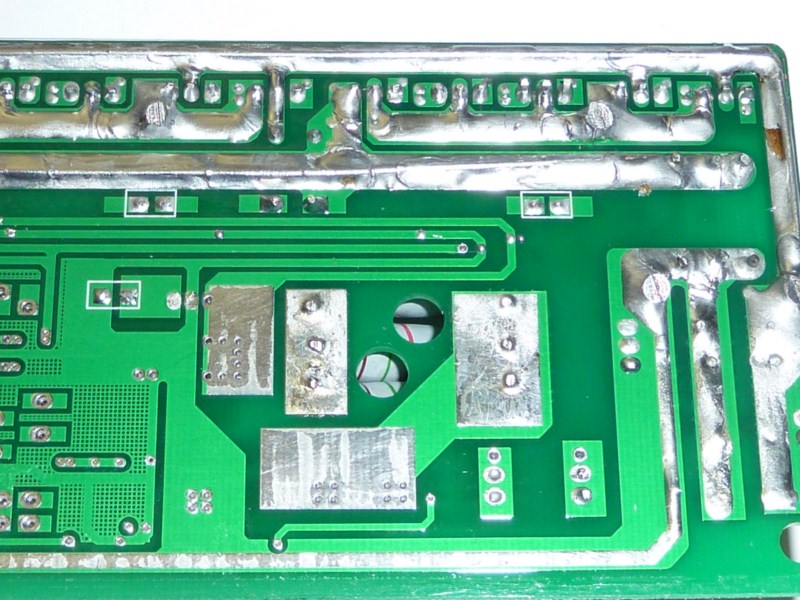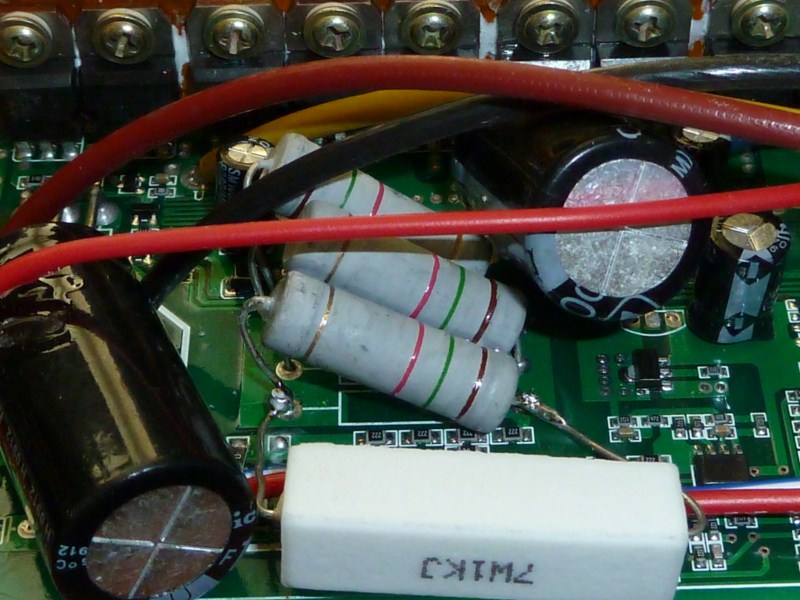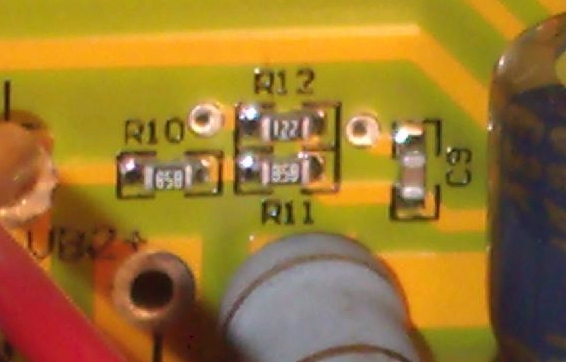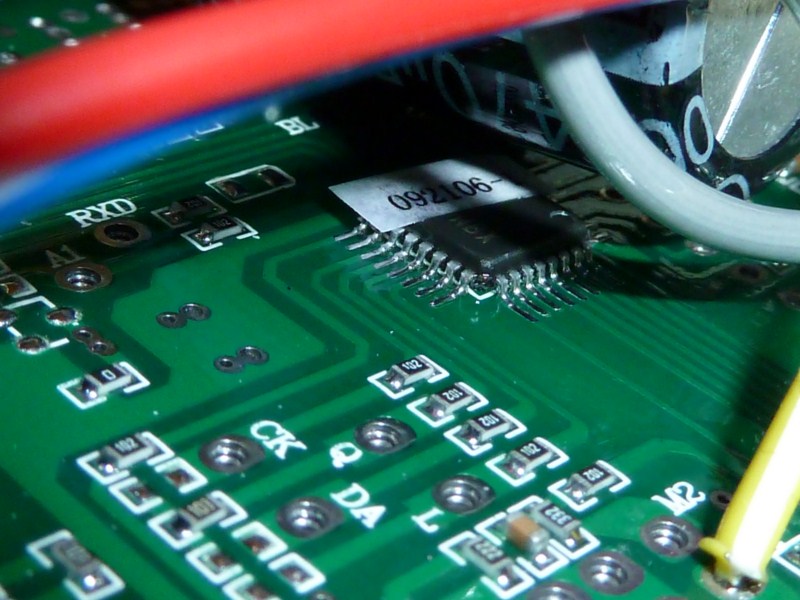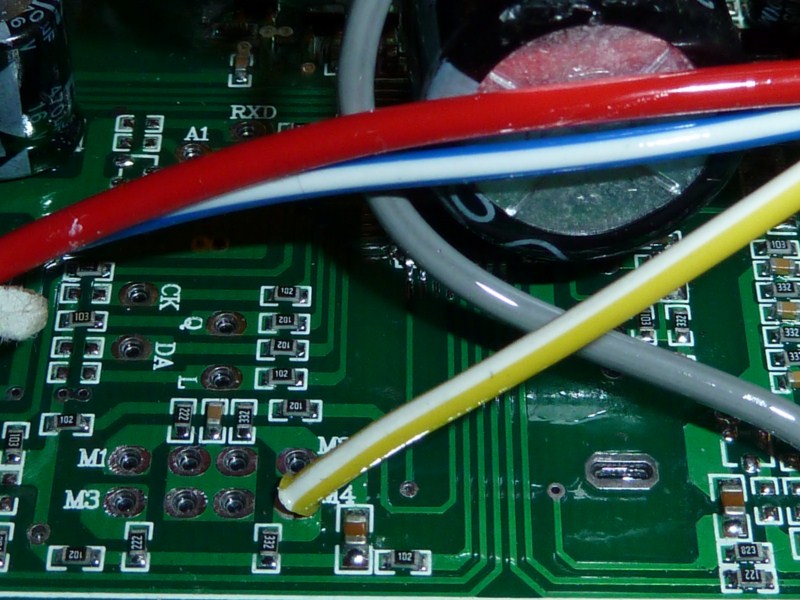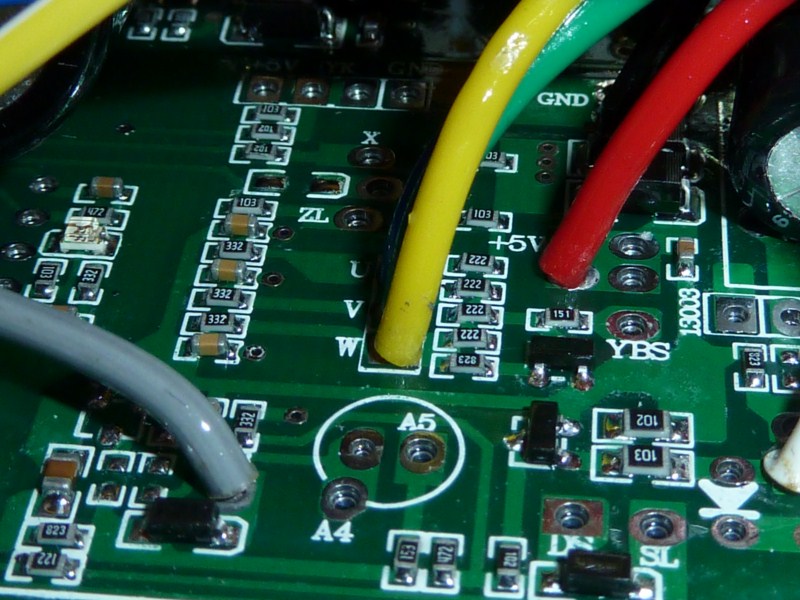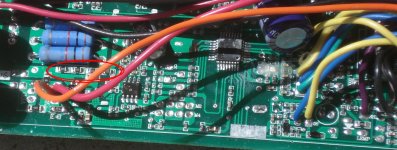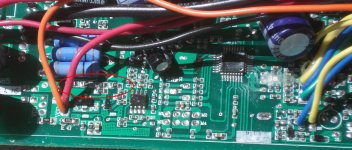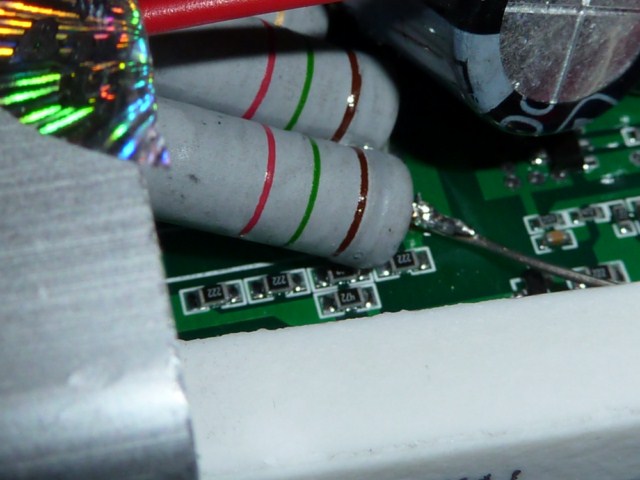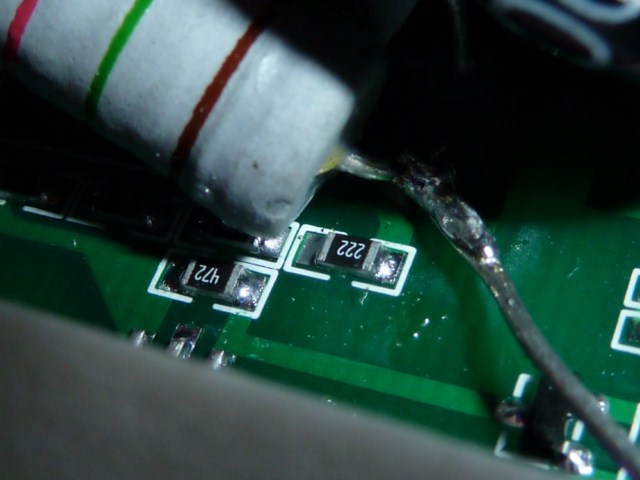Zenid
100 W
P.S: I think I found a boo boo in your math. (I may be wrong, though, so do check!)
[EDIT]I just saw that you're using a lithium pack and need different values. I'm basing these on what I need for my SLA bank for a proportionate scalling down of the lvc to 2/3 of what it will be for the controller in its 72V 'mode'[/EDIT]
Formula for "adding" resistors in parallel:
1/r = 1/r1 + 1/r2 + 1/r3
For three 1500Ω resistors we have:
1/r = 1/1500 + 1/1500 + 1/1500
=> 1/r = 1/500
=> r = 500Ω
We want to reduce this to the ratio of 48/72 = 2/3 => 333.3Ω
(In other words, we only need two thirds of this resistance value to knock down 48V to what the board wants)
What YOU have is (one REPLACED by a 1K resistor):
1/r = 1/1500 + 1/1500 + 1/1000
=> 1/r = 0.000666.. + 000666.. + 0.001 = 0.00233..
=> r = 428.57
What you WANT is (a 1K resistor ADDED in parallel!)
1/r = 1/1500 + 1/1500 + 1/1500 + 1/1000
=> 1/r = 0.000666.. + 000666.. 000666.. + 0.001 = 0.003
=> r = 333.3Ω
In other words, you need to ADD the 1K resistor in parallel, not replace one of the existing ones
If I'm right, I'll bet the "slight drop" in voltage you saw was about 14.2%... ?
[EDIT]I just saw that you're using a lithium pack and need different values. I'm basing these on what I need for my SLA bank for a proportionate scalling down of the lvc to 2/3 of what it will be for the controller in its 72V 'mode'[/EDIT]
Formula for "adding" resistors in parallel:
1/r = 1/r1 + 1/r2 + 1/r3
For three 1500Ω resistors we have:
1/r = 1/1500 + 1/1500 + 1/1500
=> 1/r = 1/500
=> r = 500Ω
We want to reduce this to the ratio of 48/72 = 2/3 => 333.3Ω
(In other words, we only need two thirds of this resistance value to knock down 48V to what the board wants)
What YOU have is (one REPLACED by a 1K resistor):
1/r = 1/1500 + 1/1500 + 1/1000
=> 1/r = 0.000666.. + 000666.. + 0.001 = 0.00233..
=> r = 428.57
What you WANT is (a 1K resistor ADDED in parallel!)
1/r = 1/1500 + 1/1500 + 1/1500 + 1/1000
=> 1/r = 0.000666.. + 000666.. 000666.. + 0.001 = 0.003
=> r = 333.3Ω
In other words, you need to ADD the 1K resistor in parallel, not replace one of the existing ones
If I'm right, I'll bet the "slight drop" in voltage you saw was about 14.2%... ?


